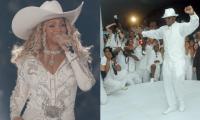Mosquito-borne diseases are the most significant public health risks of all time. According to rough estimates since the creation of our universe more people have died of mosquito-borne diseases like malaria, dengue, yellow fever, lymphatic filariasis, encephalitis, zika, chikungunya, etc., than combined all human-made wars, conflicts and natural calamities such as earthquakes, floods, famine, tornadoes, typhoons, tsunamis, cyclones, hurricanes and others.
There are 3,500 species of mosquitoes belonging to 39 genera worldwide. In Pakistan, there are 91 species of mosquitoes which belong to 10 genera. Among insect-transmitted disease pathogens, mosquitoes alone transmit disease pathogens to 700 million people annually. Dengue is an important Arboviral disease in terms of morbidity and mortality. Dengue is caused by a virus of the Flaviviridae family and there are four distinct, but closely related, serotypes of the virus that cause dengue - DEN-1, DEN-2, DEN-3 and DEN-4.
Approximately, 390 million cases of dengue fever and 0.5 million cases of Dengue Hemorrhagic Fever (DHF) occur each year around the globe. According to World Health Organization (WHO), more than 3.9 billion people in 128 countries are at risk from dengue infection.
Dengue is widespread throughout the tropics and subtropics, with local variations in risk influenced by rainfall, temperature and unplanned rapid urbanization. Dengue was first reported in Pakistan in 1934 — before partition. Later, it was recorded in Lahore in 1971, Karachi in 1985 and Khyber Pakhtunkhwa in 1996. But now it is found everywhere in the country.
Dengue epidemics have occurred in the last few years in the country, which has caused death to thousands of human lives. These days more than 12,000 people are infected with dengue virus and hundreds have died so far.
Dengue virus is transmitted to humans by infected female mosquitoes mainly of the species Aedes aegypti and, to a lesser extent, Ae. albopictus. Human is the primary host of dengue virus, while monkeys, bats and wild birds are the secondary hosts. After virus incubation for 4-10 days, an infected mosquito is capable of transmitting the virus for the rest of its life.
Adult female mosquitoes bite hosts to get the protein they need to develop their eggs. When taking a blood meal, an infected female mosquito injects its saliva into the human host to prevent the host’s blood from clotting and to ease feeding. This injection of saliva infects the host with the dengue virus.
Adult, female mosquitoes lay their eggs on the inner, wet walls of water-filled containers, above the waterline. Eggs hatch when submerged in water. Larvae are aquatic and develop into non-feeding pupae. In the pupal stage, the larvae transform into adults.
The immature stages - egg, larva and pupa - of mosquitoes are found in water (aquatic) while the mature (adult) stage is terrestrial. The immature stages last for 2-3 weeks and adults live for 1-2 months, depending on the environmental conditions and species.
Ae. Aegypti mosquito lives in urban habitats near human dwellings and breeds mostly in man-made containers. Unlike other mosquitoes, Ae. Aegypti is a day-time feeder. Its peak biting periods are early in the morning and in the evening before dusk. Female Ae. Aegypti bites multiple people during each feeding period. Aedes eggs can remain dry for over a year in their breeding habitat and hatch when in contact with water.
Dengue fever affects the body by causing a high fever and flu-like symptoms. The virus infects host blood and causes a migraine-like headache, rash, chills, achiness, queasiness, tiredness, retro-orbital/eye/body/joint pain, myalgia, leaky capillaries, arthralgia and gastrointestinal discomfort. It can affect the blood, causing mild bleeding of the gums and bruise. Mosquito bites further spread dengue from infected to healthy people around. Mosquito daily flight range is about 500 m, but the gentle breeze of winds increases their flight ranges.
Currently, effective vaccines and methods to treat dengue fever are lacking. At present, the main method to control or prevent the transmission of the dengue virus is to combat vector mosquitoes through:
* Preventing mosquitoes from accessing egg-laying habitats by environmental management and modification.
* Disposing of solid waste properly and removing artificial man-made habitats.
* Covering, emptying and cleaning of domestic water storage containers every week.
* Applying appropriate insecticides (WHO recommended) to water storage outdoor containers.
* Using personal household protection measures, such as window screens, long-sleeved clothes, repellents, insecticide-treated materials (nets/curtains), coils and vaporizers.
These measures have to be observed during the day both at home and workplace since the dengue mosquito bites during the day.
* Using Sterile Insect Technique, which is an environmentally-friendly insect pest control method involving mass-rearing and sterilization, using radiation (Cobalt 60 - 80 Gy irradiation source) of male mosquitoes in pupal stage, followed by the systematic area-wide release of the sterile males by air over defined areas, where they mate with wild females resulting in no offspring.
* Improving community participation, mobilization and awareness for sustained vector control as wide-area management.
* Applying insecticides as space spraying (Lambda Cyhalothrin, Alpha Cypermethrin), larviciding (Temephos), fogging (Deltamethrin, Malathion) and IGR’s (Methoprene) and BT during outbreaks as the emergency vector-control measures.
* Mosquito-repelling plants such as theCitrosain homes and Citronella applied candles reduce mosquito bites.
* Active monitoring and surveillance of mosquito vectors should be carried out to determine the effectiveness of control interventions.
* Encouraging natural predators of mosquitoes including dragon and damselflies, spiders, lizards, wild birds, waterfowl, bats, frogs, toads, tadpoles, several mosquito-eating fish species (Gambusia, Guppy, Tilapia, Goldfish, Cyprinids) and entomopathogenic fungi and nematodes.
* Plants such as cattails, bulrushes, Sagittaria, western water lily, water horsetail, arrowhead which attract dragon/damselflies and other mosquito-eating insects.
* Dense shrubs and brush provide a habitat for birds and mosquito-eating insects.
* Regular awareness programs by entomologists, biotechnologists, microbiologists and medical experts through print, electronic media, walks/seminars/talks through TV, radio, mosques, hujras, and community places.
* Careful clinical detection and management of dengue patients can significantly reduce mortality rates from severe dengue.
* Allocation of handsome amount of funds for thorough researches on mosquito species complex identification, individual vector species dengue burden, dengue virus virulence and epidemiology, and diagnostic labs for quick, easy and cheap dengue virus detection, and development of efficient vaccines against dengue virus.
(The writer is a senior entomologist, presently serving as vice-chancellor, University of Swabi, and Women University Swabi. He is Fellow of Royal Entomological Society London, Member Entomological Society America and Associate Editor, Journal of Entomology and Zoology Studies.Email:imtiazkhanswb@gmail.com)
Parliamentary leader of the PMLN in the Senate and Chairman Senate Committee on Foreign Affairs Senator Irfan Siddiqui...
This representational image shows a police official directing the way to the ambulance. — AFP/FileLAHORE: Three...
Particiapants attending a one-day workshop on Human Rights in District Torghar organised by Directorate General Law...







